Requirements:
First, thing you need to do is to set up your Virtual Box. Go ahead download and install Virtual Box (the download link is given above in the requirements).
Press “New“, Type as “CentOS 64 bit” or anything you want. Set the type as “Linux“, Version as “Red Hat 64 bit“. And press “Next”.
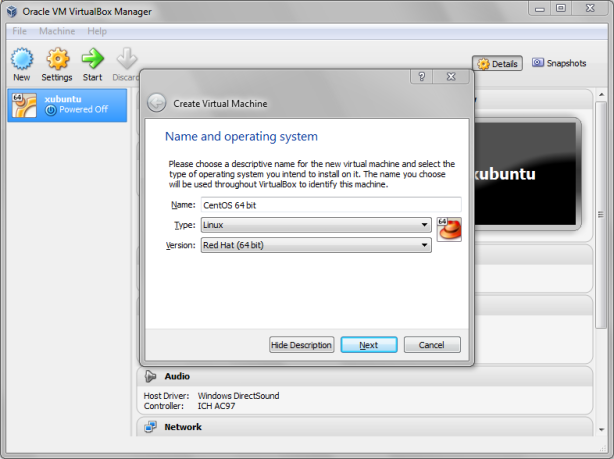
Allocate “Memory ” to 512 Mb or 1024 MB . You can increase this value according to requirements. And Press”Next“.

Then select “Create a virtual Hardisk Now” and press “Create“.
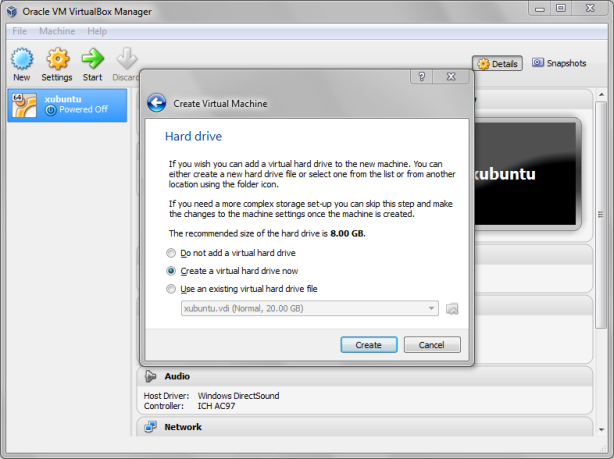
Then choose “VDI” which is the first option, and press “Next“.
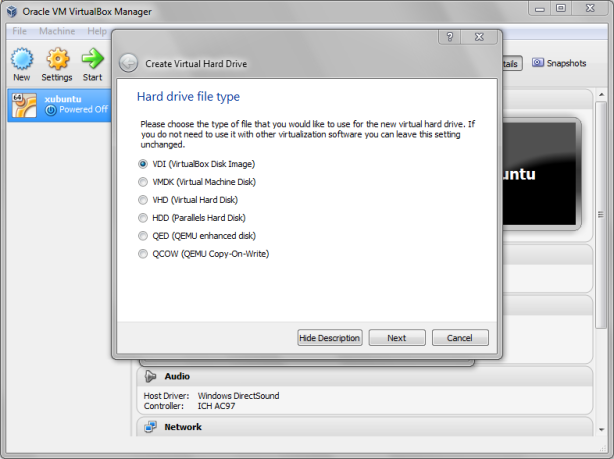
Then choose “Dynamically allocated“
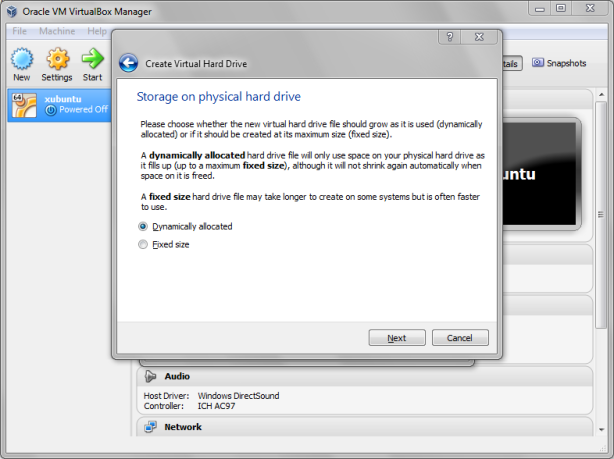
Choose the amount of hard disk space you want to allocate for your CentOS system. Select atleast 8Gb-10GB . I have allocated 20 GB. And press “Create“.

You would see the Virtual Box Home Screen. Now Press on “Start“.

Then press the small folder icon and choose the CentOS ISO file you have downloaded earlier. And then press “Start“.
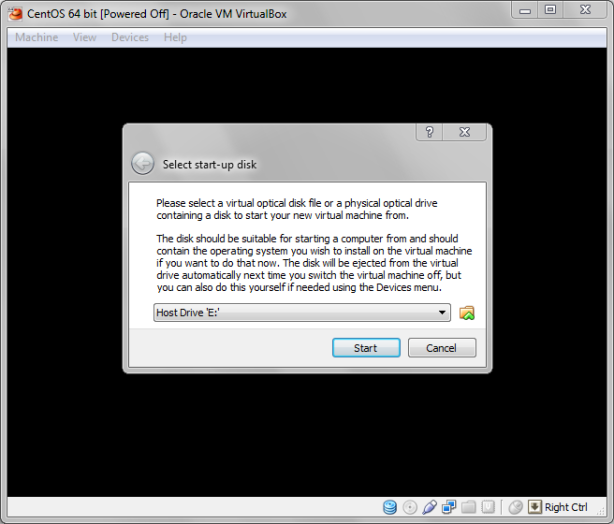

Wait for a few seconds and you will see the CentOS boot menu. Now, select the first option “Install or upgrade an existing system“. And press “Enter” in your keyboard.
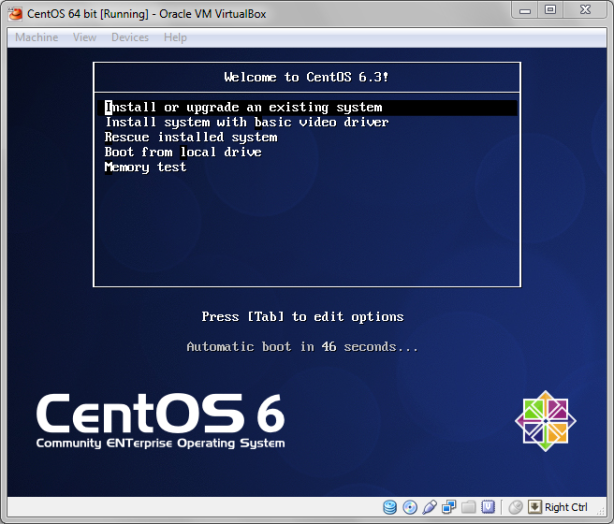
Now , it will take a few seconds to load.
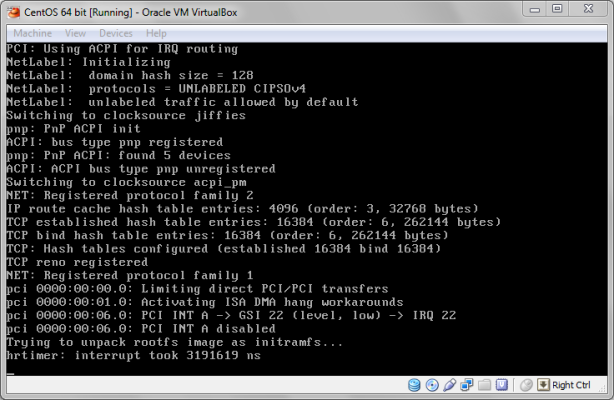
[Note: To scroll through different options, you can either use the Arrow keys in your keyboard or the TAB key to move through different options . You may also use SPACE bar in your keyboard or ENTER key to make selections]
Now, you will probably get a message box saying “Disk Found” and if you want to verify the contents in the CD. Press “Skip” as you are installing from an ISO file. If you need, you can press “OK” and verify the contents but it might take a while.
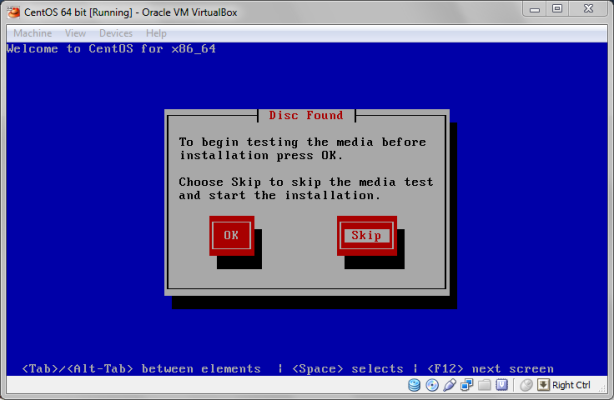
You would see a message “Welcome to CentOS” and then press “OK“.
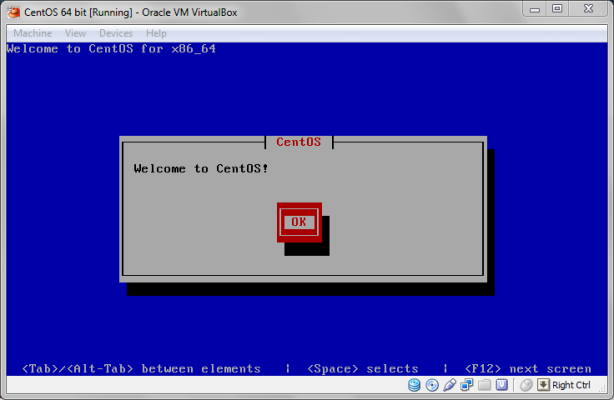
Select the language and press “OK“.
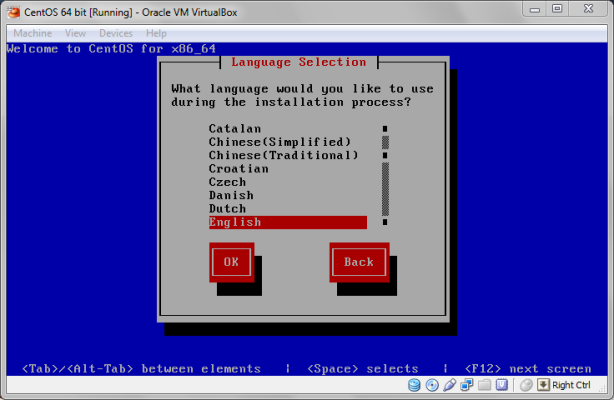
Select the model of the keyboard or just leave it to the default value. then press “OK“.
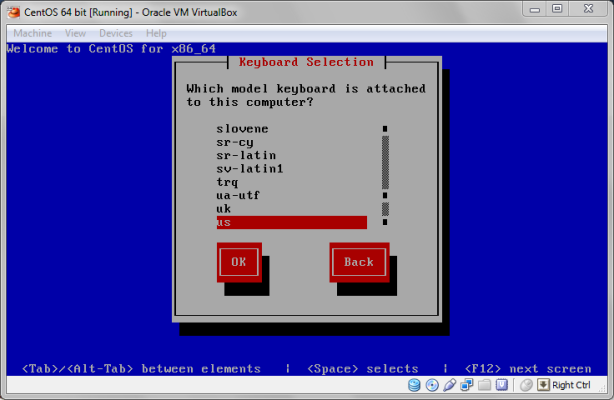
If you get a “Warning Message” such as the one below, just choose “Re-initialize all“.
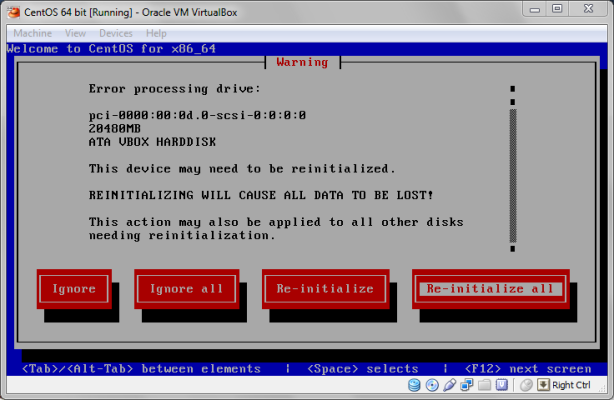
Then select your time zone and (Press TAB) and then “OK“.
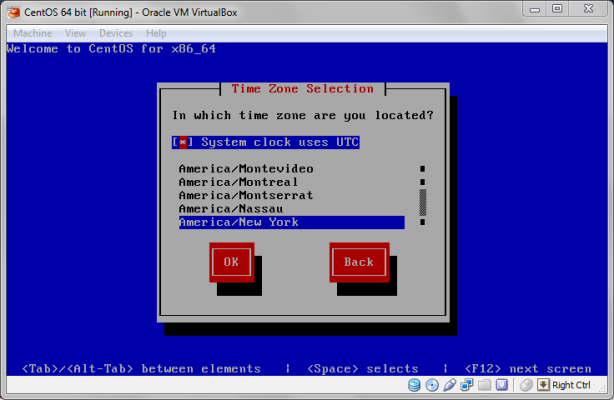
Now, you will need to enter a password. This will be the password for the root user (or Administrator password). Then select “OK“. {Remember you can use the arrow keys or TAB to move through different fields or options in the screen}.
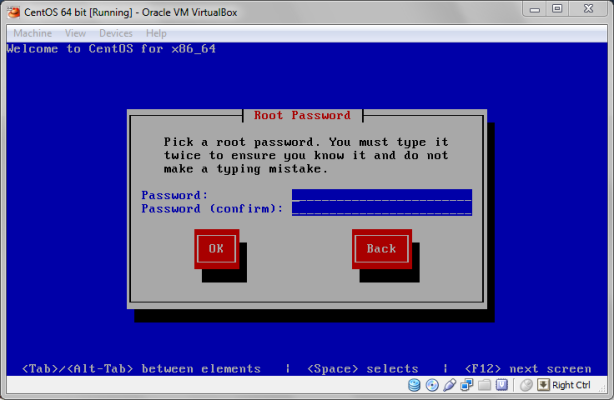
Now, select “Use entire drive” and then press “OK“.
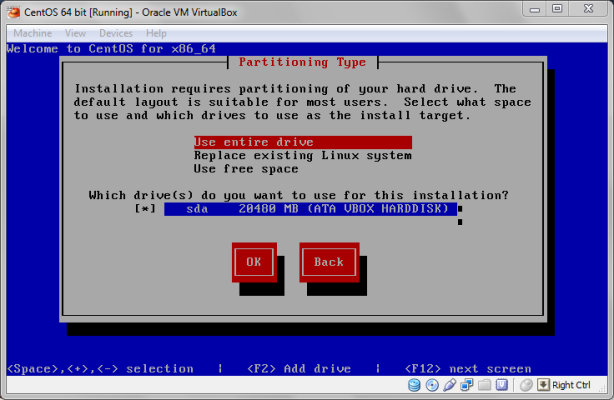
Now, press “Write changes to disk“.
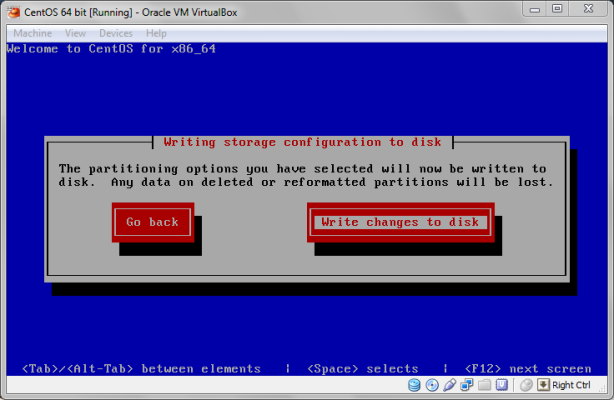
Now, it will begin installing CentOS. It might take a while for it to complete.
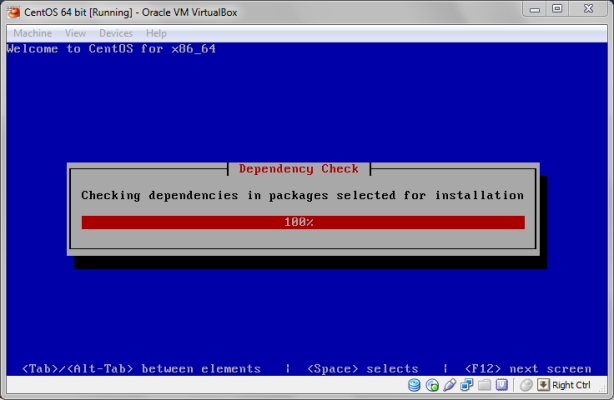
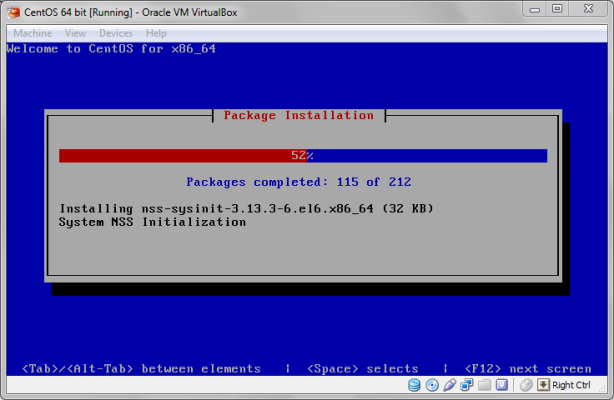
After, it is done installing , you will see a message saying “Congratulations, your CentOS installation is complete“. Select “Reboot” and hit ENTER.
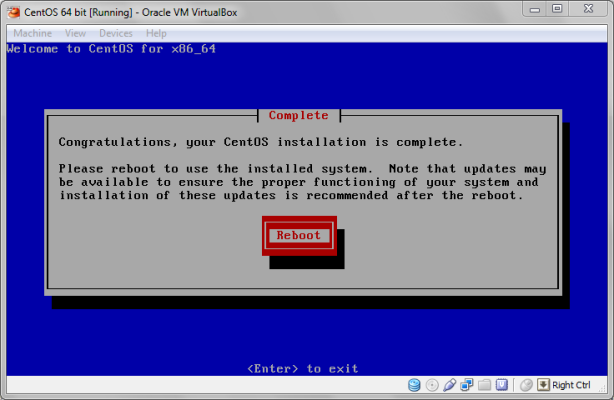
It will reboot now, and you will see the CentOS booting screen.
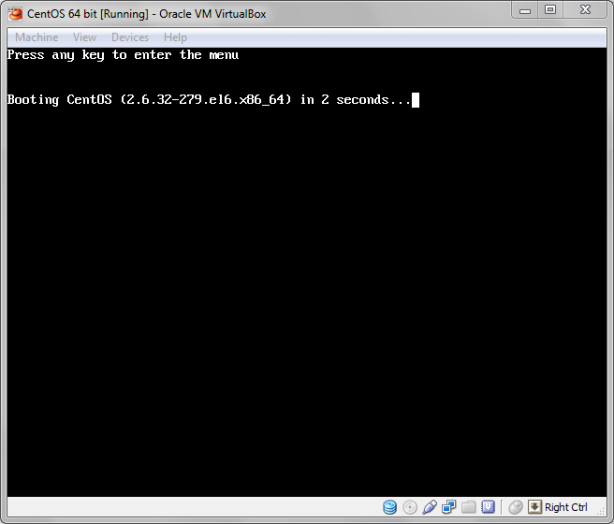
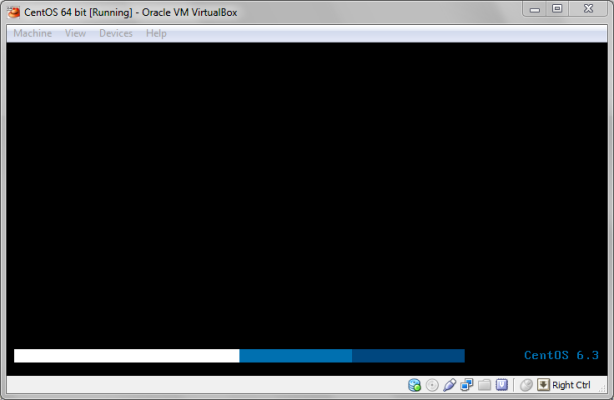
Now, you will see the login prompt as shown in the picture below. Now, Type the login as “root” and password as the password you entered during the setup.
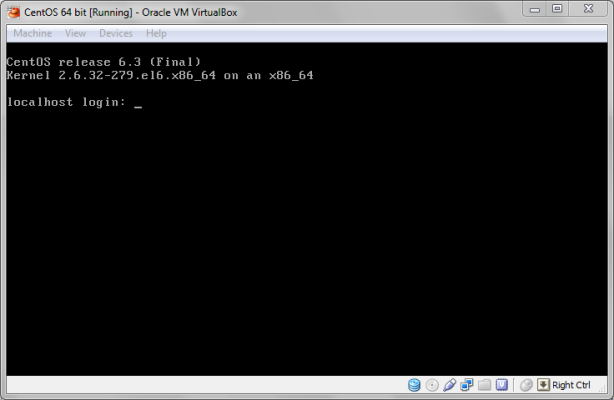
After successful login you will see a prompt as shown below with # symbol at the end.
- CentOS 64-bit ISO : Download Link (~330 MB)
- Virtual Box : Download Link (~90 MB)
- Atleast 8 GB -of free disk space
First, thing you need to do is to set up your Virtual Box. Go ahead download and install Virtual Box (the download link is given above in the requirements).
Press “New“, Type as “CentOS 64 bit” or anything you want. Set the type as “Linux“, Version as “Red Hat 64 bit“. And press “Next”.

Allocate “Memory ” to 512 Mb or 1024 MB . You can increase this value according to requirements. And Press”Next“.

Then select “Create a virtual Hardisk Now” and press “Create“.

Then choose “VDI” which is the first option, and press “Next“.

Then choose “Dynamically allocated“

Choose the amount of hard disk space you want to allocate for your CentOS system. Select atleast 8Gb-10GB . I have allocated 20 GB. And press “Create“.

You would see the Virtual Box Home Screen. Now Press on “Start“.

Then press the small folder icon and choose the CentOS ISO file you have downloaded earlier. And then press “Start“.


Wait for a few seconds and you will see the CentOS boot menu. Now, select the first option “Install or upgrade an existing system“. And press “Enter” in your keyboard.

Now , it will take a few seconds to load.

[Note: To scroll through different options, you can either use the Arrow keys in your keyboard or the TAB key to move through different options . You may also use SPACE bar in your keyboard or ENTER key to make selections]
Now, you will probably get a message box saying “Disk Found” and if you want to verify the contents in the CD. Press “Skip” as you are installing from an ISO file. If you need, you can press “OK” and verify the contents but it might take a while.

You would see a message “Welcome to CentOS” and then press “OK“.

Select the language and press “OK“.

Select the model of the keyboard or just leave it to the default value. then press “OK“.

If you get a “Warning Message” such as the one below, just choose “Re-initialize all“.

Then select your time zone and (Press TAB) and then “OK“.

Now, you will need to enter a password. This will be the password for the root user (or Administrator password). Then select “OK“. {Remember you can use the arrow keys or TAB to move through different fields or options in the screen}.

Now, select “Use entire drive” and then press “OK“.

Now, press “Write changes to disk“.

Now, it will begin installing CentOS. It might take a while for it to complete.


After, it is done installing , you will see a message saying “Congratulations, your CentOS installation is complete“. Select “Reboot” and hit ENTER.

It will reboot now, and you will see the CentOS booting screen.


Now, you will see the login prompt as shown in the picture below. Now, Type the login as “root” and password as the password you entered during the setup.

After successful login you will see a prompt as shown below with # symbol at the end.
No comments:
Post a Comment